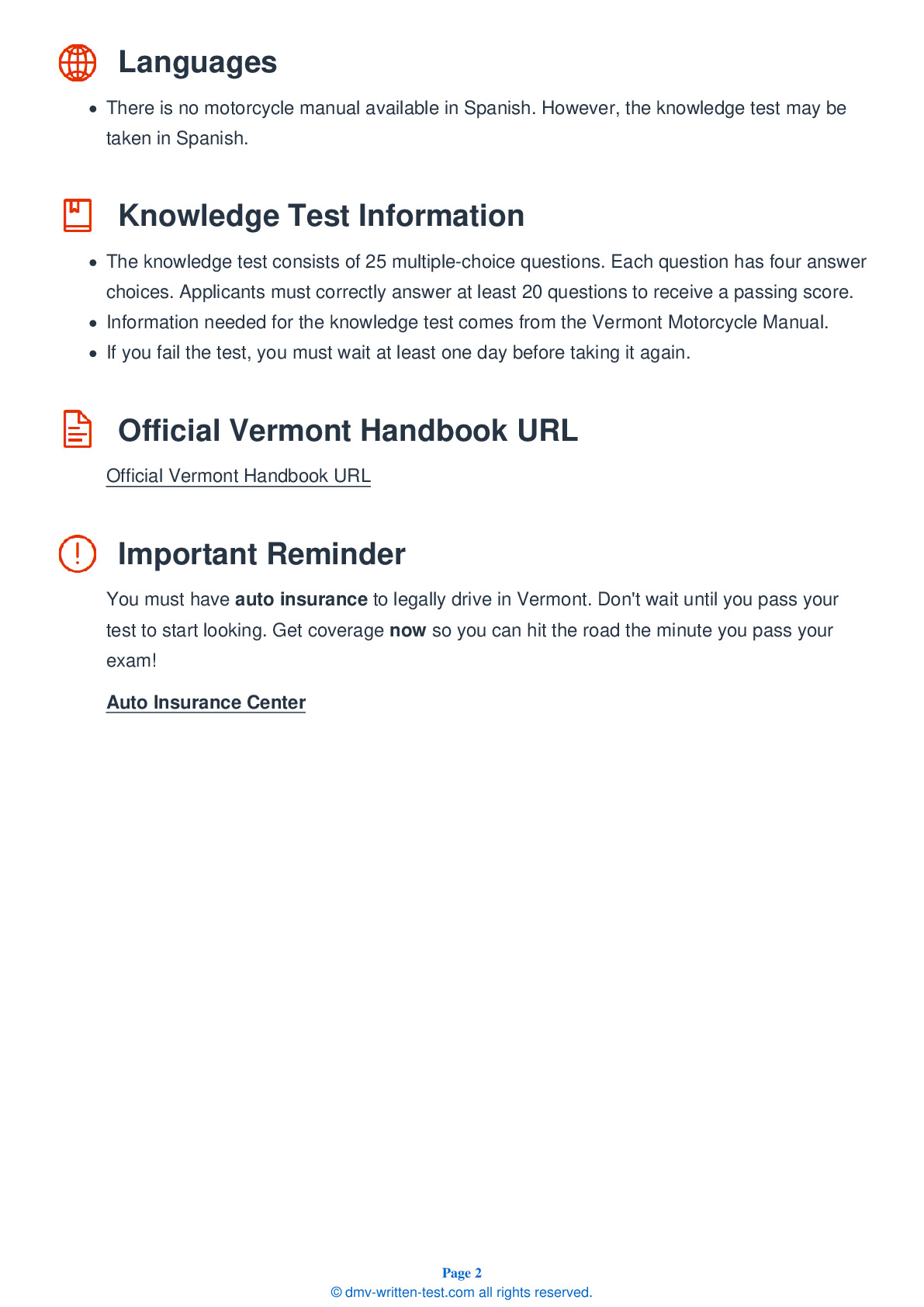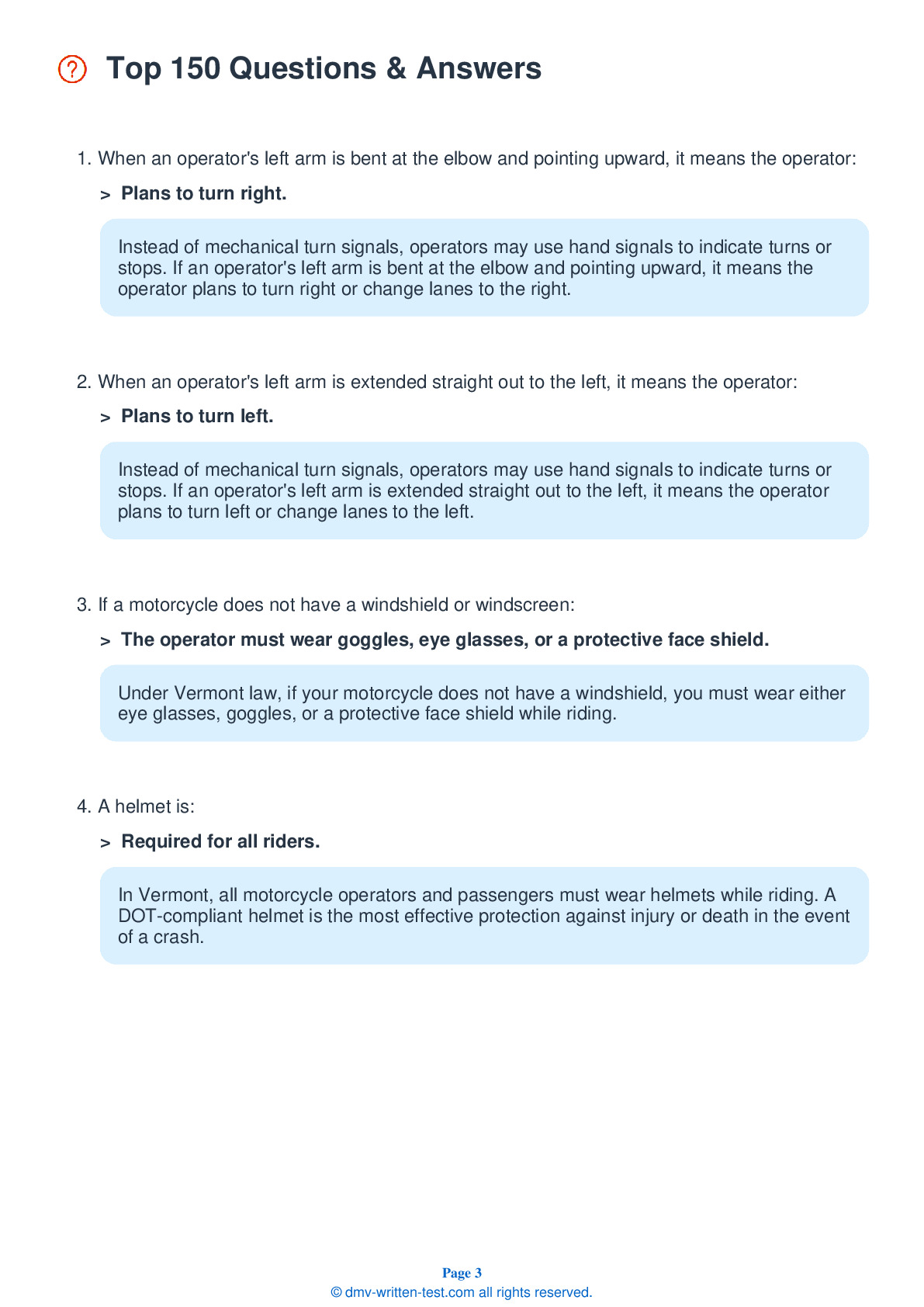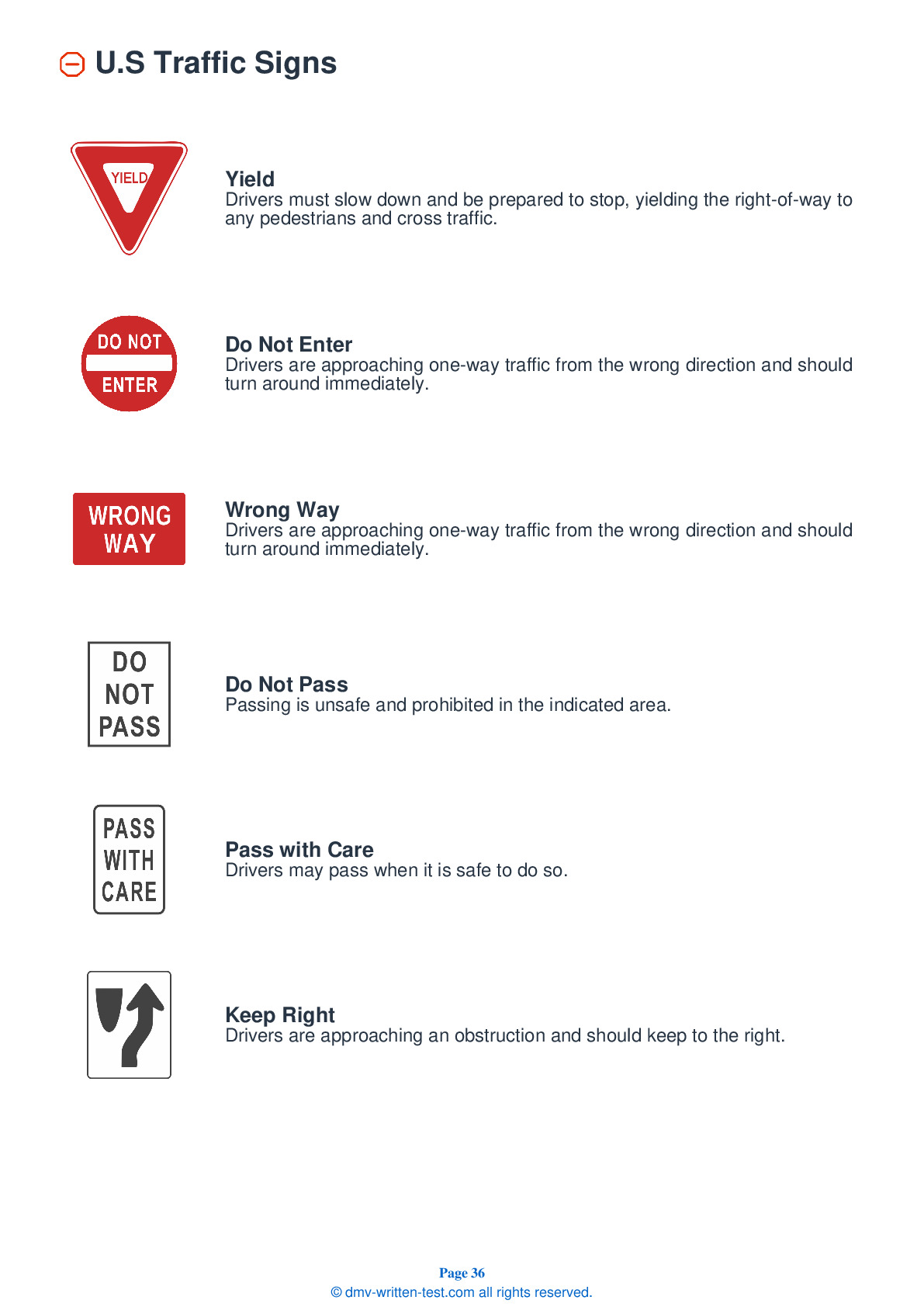2025 Vermont Motorcycle Permit Test 3
The following questions are from real DMV written motorcycle permit tests. These are some of the actual permit questions you will face in Vermont when getting your motorcycle learners permit. Each motorcycle theory practice test question has three answer choices. Select one answer for each question and select "grade this section." You can find this button at the bottom of the drivers license quiz. For a complete list of questions and answers for Vermont please visit https://cheat-sheets.dmv-written-test.com/en/vermont/motorcycle.
Number of Tests
Number of Question
Passing Score
13. If you are being chased by a dog, you should:
Explanation
Motorcycles often seem to attract dogs. If you are being chased by a dog, downshift and approach it slowly. Then, as you approach the dog, accelerate and leave it behind.
14. As an operator, you should prepare a passenger to ride by instructing them to do each of the following, except:
Explanation
Before beginning a ride, you should ask your passenger to mount the motorcycle only after the engine has been started. They should sit as far forward as they can without crowding you and hold onto the motorcycle's passenger handholds or onto your waist, hips, or belt. They should keep their legs away from the muffler, chains, and other moving parts.
15. Taking corners too fast:
Explanation
Taking a corner too fast may cause you to cross into another lane or go off the road. Be sure to decelerate before beginning to take a turn or curve.
16. A passenger on a motorcycle should:
Explanation
Passengers should get on a motorcycle only after the engine has been started and the transmission is put in neutral. They should sit as far forward as possible without hindering the operator's control of the motorcycle and should hold onto the operator's waist, hips, or belt.
17. When choosing a lane position, you should consider:
Explanation
While a properly chosen lane position can offer several advantages, you should be certain that your lane position will allow you to be seen by others and have an adequate space cushion.
18. When approaching an object or uneven surface that you cannot avoid, you should:
Explanation




